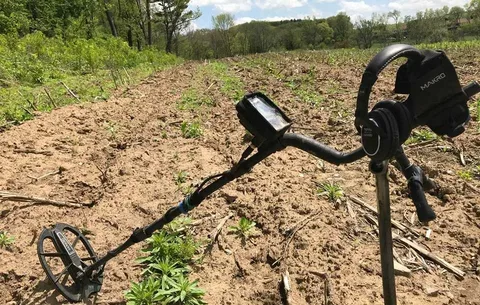Gold mining by country is an important economic activity that contributes significantly to the global production of this precious metal. The ranking of gold mining by country provides valuable insight into the distribution of gold resources and the relative importance of different nations in the global gold mining industry. In this analysis, we will provide a global comparison of gold mining by country, examining the production levels, reserves, and overall contribution of various nations to the gold mining sector. This examination will offer a comprehensive overview of the global landscape of gold mining, highlighting the key players and their respective positions in the industry.
Ranking of Gold Mining by Country: A Global Comparison is a comprehensive analysis that ranks countries based on their gold mining production and explores the various factors that contribute to the success of each country’s gold mining industry. The report provides a detailed comparison of gold mining production across different countries, including historical trends, current production levels, and future potential. It also examines the impact of factors such as geological reserves, government policies, and technological advancements on the gold mining industry in each country. The report aims to provide valuable insights for investors, industry stakeholders, and policymakers seeking to understand the global dynamics of gold mining.
The Top 10 Gold Mining Countries in the World

1. China – China is the largest gold producing country in the world, with an estimated 420 metric tons of gold production in 2020. The country’s gold production has been steadily increasing over the years, with significant contributions from large-scale mining operations as well as small-scale, artisanal mining activities.
2. Australia – Australia is the second largest gold producing country, with an estimated 330 metric tons of gold production in 2020. The country is home to some of the world’s largest gold mines, including the Super Pit mine in Western Australia and the Boddington mine.
3. Russia – Russia is the third largest gold producer, with an estimated 310 metric tons of gold production in 2020. The country’s gold mining industry is primarily concentrated in the eastern regions of the country, including the Krasnoyarsk and Magadan oblasts.
4. United States – The United States is the fourth largest gold producing country, with an estimated 190 metric tons of gold production in 2020. Gold mining in the US is spread across various states, with Nevada being the largest gold producing state, followed by Alaska, Utah, and Colorado.
5. Canada – Canada is the fifth largest gold producer, with an estimated 170 metric tons of gold production in 2020. The country’s gold mining industry is primarily concentrated in the provinces of Ontario, Quebec, and British Columbia.
6. Ghana – Ghana is the largest gold producer in Africa and the sixth largest globally, with an estimated 160 metric tons of gold production in 2020. The country’s gold mining industry is a significant contributor to its economy, and it is home to several large-scale mining operations.
7. Uzbekistan – Uzbekistan is the seventh largest gold producing country, with an estimated 100 metric tons of gold production in 2020. The country’s gold mining industry has been growing rapidly in recent years, with significant investments in expanding and modernizing its mining infrastructure.
8. Indonesia – Indonesia is the eighth largest gold producer, with an estimated 95 metric tons of gold production in 2020. The country’s gold mining industry is primarily concentrated in the provinces of Papua and West Sumatra.
9. Mexico – Mexico is the ninth largest gold producing country, with an estimated 90 metric tons of gold production in 2020. The country’s gold mining industry is spread across several states, including Sonora, Chihuahua, and Zacatecas.
10. Peru – Peru is the tenth largest gold producer, with an estimated 80 metric tons of gold production in 2020. The country is home to several large-scale gold mining operations, including the Yanacocha and Lagunas Norte mines.
A Closer Look at Gold Mining in Australia

The gold mining industry in Australia is a significant contributor to the country’s economy. Australia is the second-largest gold producer in the world, with major gold mining operations located in Western Australia, New South Wales, and Queensland.
The mining process involves exploration, extraction, and processing of gold ore to produce gold bullion. This process has a significant impact on the environment, wildlife, and local communities. Environmental concerns include habitat destruction, water pollution, and use of toxic chemicals such as cyanide for gold extraction.
In recent years, there has been increasing scrutiny of the social and environmental impact of gold mining operations in Australia. This has led to calls for more sustainable mining practices, as well as greater transparency and accountability from mining companies.
Despite these challenges, the gold mining industry continues to play a significant role in the Australian economy, providing employment and contributing to the country’s overall wealth. The industry also plays a vital role in supporting regional development and infrastructure in remote and rural areas of Australia.
The Impact of Gold Mining in South Africa
See also: gold mining machinery

The impact of gold mining in South Africa is substantial. It has contributed to the country’s economic growth and development, but it has also been associated with significant environmental and social challenges.
Economically, gold mining has been a major driver of South Africa’s economy, with the industry contributing significantly to the country’s GDP and employment. However, the industry has also faced challenges including declining reserves, rising production costs, and labor disputes.
Environmentally, gold mining has had a significant impact on South Africa’s water resources and ecosystem. The use of toxic chemicals such as cyanide and mercury in the extraction process has resulted in water pollution and soil degradation. In addition, the excavation and processing of gold ore have caused deforestation and habitat destruction.
Socially, gold mining has had both positive and negative effects on South Africa’s communities. While it has provided employment and infrastructure development, it has also been associated with social displacement, health risks, and human rights violations.
Overall, the impact of gold mining in South Africa is complex and multifaceted, with both positive and negative consequences for the country and its people. Despite the challenges, the industry continues to play a significant role in South Africa’s economy and remains an important source of employment and revenue.
Exploring the Gold Mining Industry in Russia

Exploring the gold mining industry in Russia involves understanding the country’s significant role as one of the largest gold producers globally. Russia has an extensive history of gold mining, with deposits found in various regions throughout the country. The industry is supported by a mix of large-scale mining operations and smaller, artisanal miners. Additionally, there are numerous opportunities for investment and development in the Russian gold mining sector, with the potential for significant growth in production and exploration. Understanding the regulatory framework, geological potential, and the competitive landscape are key factors in exploring the gold mining industry in Russia.
Challenges and Opportunities in Gold Mining in Canada
Challenges in gold mining in Canada include environmental concerns, regulatory issues, and indigenous land rights. Furthermore, fluctuating gold prices and high production costs can also present obstacles for mining companies.
On the other hand, Canada’s stable political environment, supportive mining regulations, and infrastructure make it an attractive destination for gold mining investment. The country also boasts significant untapped gold reserves, presenting ample opportunities for exploration and extraction. Moreover, advancements in technology and equipment have the potential to improve the efficiency and sustainability of gold mining in Canada.
The Rich History of Gold Mining in the United States
The rich history of gold mining in the United States dates back to the early 19th century, when the discovery of gold in 1848 sparked the famous California Gold Rush. This event drew thousands of people from all over the country and beyond, leading to a massive influx of prospectors hoping to strike it rich.
Subsequent gold rushes occurred in other regions, such as Alaska, Colorado, and the Black Hills of South Dakota. These rushes played a crucial role in the expansion of the United States and the development of many western territories.
Gold mining also played a significant role in the nation’s economy, with the establishment of major mining companies and the creation of mining towns and communities. It also led to the development of new technologies for extracting and processing gold ore.
Today, gold mining continues to be a significant industry in the United States, with several states still producing gold commercially. The history of gold mining in the U.S. is a testament to the enduring allure of this precious metal and its impact on the country’s development.
Gold Mining in China: A Growing Industry
China is the largest gold producer in the world, with the country’s mining industry experiencing significant growth in recent years. The exploration and production of gold in China is carried out by both large-scale mining companies and smaller, artisanal operations. The government has been supportive of the industry, with favorable policies and regulations in place to encourage investment and development.
Gold mining in China is primarily centered in the provinces of Shandong, Henan, Fujian, and Yunnan, where some of the country’s largest gold deposits are located. The industry has also seen increased investment in modern technology and techniques, leading to improved efficiency and production levels. Additionally, China has been expanding its overseas mining operations, particularly in Africa and Central Asia, to secure access to additional mineral resources.
Despite the growth of the gold mining industry in China, the country still faces challenges such as environmental concerns, safety issues, and the regulation of small-scale mining operations. Efforts are being made to address these issues through stricter enforcement of regulations and the promotion of sustainable and responsible mining practices.
Overall, the gold mining industry in China is expected to continue growing, driven by the country’s significant gold reserves and ongoing investment in exploration and development. As a result, China is likely to remain a key player in the global gold market in the years to come.
The Rising Influence of Gold Mining in Peru
The rising influence of gold mining in Peru has been driven by a combination of political, economic, and environmental factors. In recent years, Peru has become one of the world’s largest producers of gold, with this industry playing a significant role in the country’s economy. However, the expansion of gold mining has also led to social and environmental consequences, including deforestation, water pollution, and conflict with indigenous communities. The Peruvian government has implemented measures to regulate and control the gold mining industry, but the challenges of illegal and informal mining persist. The increasing influence of gold mining in Peru highlights the complexities and trade-offs associated with natural resource extraction in developing countries.
Gold Mining in Ghana: Balancing Economic Growth and Environmental Concerns
Gold mining in Ghana has been a major contributor to the country’s economy, with the industry accounting for a significant portion of Ghana’s GDP. However, the increase in gold mining activity has raised concerns about its environmental impact, particularly in terms of deforestation, water pollution, and land degradation.
The government of Ghana has sought to balance economic benefits with environmental sustainability by implementing regulations and environmental guidelines for mining companies. These regulations aim to mitigate the negative impacts of gold mining while maximizing its economic benefits.
Despite these efforts, there are still ongoing challenges in effectively managing the environmental impact of gold mining in Ghana. Encroachment on protected areas, improper waste disposal, and use of mercury in gold extraction are some of the pressing issues that need to be addressed.
Environmental organizations and local communities have also been actively engaged in advocating for sustainable mining practices and greater accountability from mining companies in Ghana. The collaboration between the government, industry, and civil society is crucial in ensuring that gold mining in Ghana can continue to contribute to economic growth while minimizing its environmental footprint.
Australia and South Africa Dominate the Global Gold Mining Landscape
Australia and South Africa dominate the global gold mining landscape, accounting for a significant portion of the world’s gold production. Both countries have vast gold reserves and well-established mining industries. Australia is the world’s second-largest gold producer, with large-scale mining operations in key gold-producing regions such as Western Australia and New South Wales. South Africa, on the other hand, has a long history of gold mining and remains a major player in the global gold market, despite facing challenges such as declining production and increasing depth of mines. The two countries’ dominance in the global gold mining landscape is supported by their rich geological endowment, advanced mining technologies, and supportive government policies. Despite facing competition from other gold-producing nations, Australia and South Africa continue to play a pivotal role in meeting global gold demand.









